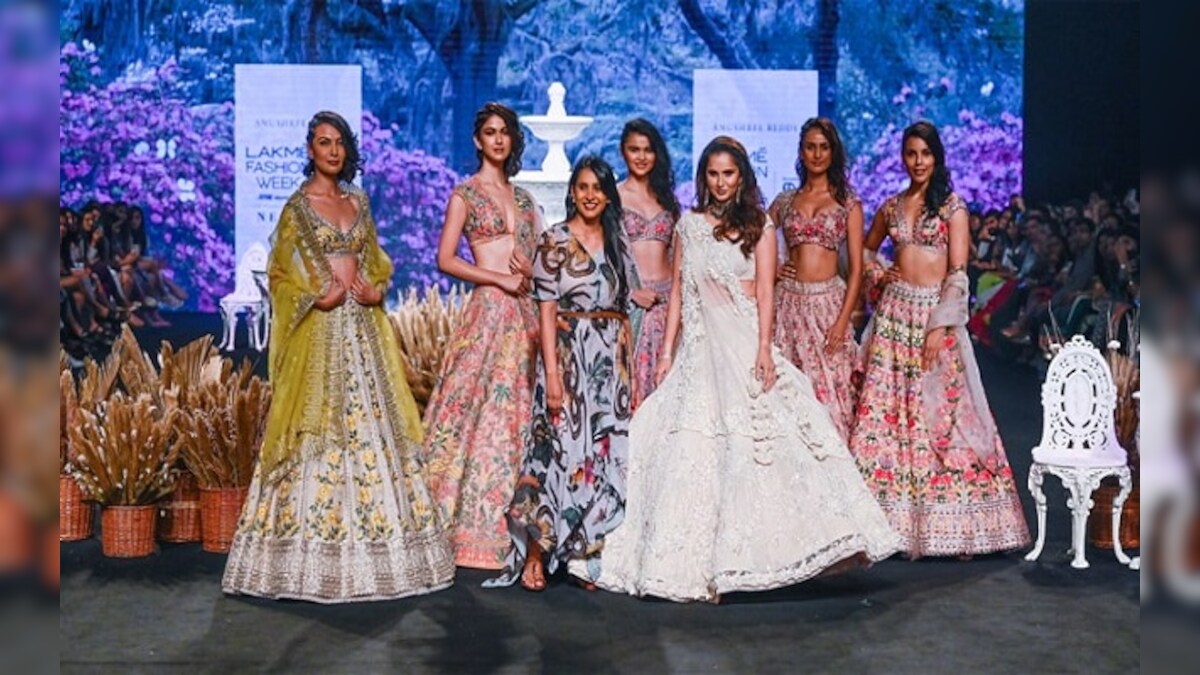The Lakme Fashion Week (LFW) in partnership with Fashion Design Council of India (FDCI) announced their fresh line-up of GenNext designers, presented by INIFD, for the upcoming gala, scheduled to be held from October 11-15 in New Delhi. To be a presenting designer at the INIFD presents GenNext program is a testament to years of dedication and unwavering commitment to the dreams that many designers have nurtured for years. The GenNext designers talk about how machine is inferior to craftsmanship, revival of weaves and more.
Talking about her collection Prasoon Sharma, one of the GenNext designer at the
Lakmé Fashion Week X FDCI
says, “The collection finds its creative inspiration in the dynamic relationship that exists between nature and humans. It symbolizes the intricate interplay between humans and nature, where humans are akin to epiphytes, reliant on the environment for their well-being and nourishment. The collection possesses a transformative camouflage quality, seamlessly uniting you with the natural world. It ingeniously incorporates the mesmerizing patterns discovered in dense, verdant forests – a tapestry woven with earthy greens, natural browns, lively bursts of colour, and captivating animal motifs and prints.”
We all know that machine is inferior to craftsmanship. Fashion is like art, it has individual interpretation, creativity and expression at its core which machines cannot replicate. To simply put it, machines do not have the inherent creativity of human minds which a craftsman does, thus craftsmanship gives the room for exploration, innovation, personalization, something that machines can never achieve. Machines are good for mass production, but you can never achieve creativity and innovation through the same.
Talking about pragmatism vs imagination, Prasoon explains, “As a designer, I am more imaginative than pragmatic, but I believe that a balance of both is essential. We design clothes to make them functional and wearable, which is the fundamental concept behind creating any garment. Until you make it wearable, it doesn’t serve any purpose. At the same time, it doesn’t mean you should leave out your essence and artistic flair. I don’t believe in creating something that I don’t love just to serve a commercial purpose. It’s important to strike the right balance where you can give wings to your imagination while grounding it with practicality and functionality.”
Another
GenNext designer
, Sonam Khetan’s collection is about sound, silence and vibrations. It features visual representations of the sounds of the Earth, the sounds of extinct birds which have been erased from our lives forever; mantras, particular soundscapes, along with how scientists, artists and Buddhists interpret sound. Sound, noise, silence are very crucial ecological questions at the moment. “Today, too often, silence means the absence of life where there used to be an abundance of it. Sound is also what connects us all. My whole project is about connectedness – connecting with ecology, with people, with us.”
For Sonam, slow fashion encompasses several crucial elements. It involves taking care of the people involved in every step of the garment-making process. It also emphasizes creating products with longevity. “I firmly believe in the idea of longevity over recycling. Being able to pass on to a child a beautiful garment made with care and love and great fabrics adds something intangible but real to the life of the wearer and the person it is passed down to. Slow fashion adds to the value of a garment or of an object, far beyond the material quality of that object or garment. It adds soul and we all can feel it, even if it’s not something that can be quantified or photographed. On a different level, it also means exploitation-less fashion –devoid of exploitation of animals, people, and natural resources.”
Arnav Malhotra’s spring-summer season of the year 2024 is about reflection and reminiscence. Passing by old haunts unbeknownst to the familiarity of its worn-out bright paint, the hand feels of an old saree whose weave remembers being worn by an ancestor, gestures of yoga and dance passed down through generations only discovered to be documented in the mythology of Hindu gods; it is a powerful feeling of nostalgia. A wistful homesickness to a home you cannot return to, but there is no grief in the yearning, only a thankfulness beyond words for having once experienced it.
From archeological depictions of The Nauvari Saree, the forefront of the inspiration for No Grey Area’s new womenswear category, to the funky-colored homes of old Madras that make up this season’s colors; NGA presents SS’24. An amalgamation of the old and the new, east and west meeting in the middle, and a relieving of bygone memories.
Talking about revival of weaves Arnav explains that Indian weaves and handlooms are extremely unique and a lot of them are being lost today. These traditional textiles hold immense cultural and artistic value, and it’s crucial to preserve and celebrate them. No Grey Area, Arnav’s brand has already showcased the beauty of Satin Ikat, Pashmina, and Madras handlooms in the last three seasons. “Our commitment is to continue incorporating and utilizing a wider range of Indian handlooms, finding innovative ways to contemporize these fabrics and make them relevant for younger Indian audiences”.
Read all the
Latest News
,
Trending News
,
Cricket News
,
Bollywood News
, India News
and
Entertainment News
here. Follow us on
Facebook
,
Twitter
and
Instagram
.

